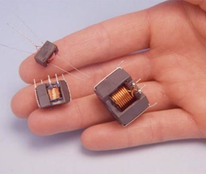The Ref: 032102 Galvanic Isolator provides an effective solution to the problem of galvanic corrosion associated with a mains power hook up.
The problem occurs when you have dissimilar metals in contact with the water that share a common earth point. This situation is found in almost all boats that are permanently afloat. See “Corrosion in marinas”
There are several possible sources of galvanic corrosion:
Galvanic currents can be generated between the dissimilar metals of hull fittings. E.g. between a brass propeller and a steel hull. This can happen even in a GRP or wooden boat where a correctly fitted earth bonding system connects all hull fittings.

Galvanic current can be produced between two boats with a common electrical earth connection. E.g. an aluminium boat moored next to a steel boat both connected to a shore mains supply. Again this can also effect GRP boats with bonded hull fittings.
The first cause cannot be removed by fitting a galvanic isolator! The traditional and correct way to prevent corrosion due to dissimilar hull fittings is to fit sacrificial anodes (usually zinc). A galvanic isolator will not prevent corrosion from this source and does not replace traditional sacrificial anodes.
The second cause can be virtually eliminated by a galvanic isolator! By fitting a galvanic isolator between the earth bonding point and the incoming shore earth connection the D.C. galvanic current that would normally be corroding the anodes, or worse the hull, is reduced almost to zero.
Installation:
Alterations to mains electrical wiring should only be carried out by a competent electrician.
The galvanic isolator must be installed between the incoming earth connection from a shore hook up and the earth bonding point on the boat. This can usually most easily be achieved directly behind the mains power inlet. The earth wire (usually green/yellow) can be cut and the resulting ends connected to the terminal studs on the galvanic isolator using ring terminals.
Placing the galvanic isolator as close to the mains inlet as possible minimises the risk of accidentally bypassing it at a later date.
Fitting the galvanic isolator involves cutting the safety earth connection. For this reason it is veryimportant that the connections to the galvanic isolator are of the highest standard possible. The galvanic isolator must be mounted securely to ensure that the connections are not strained.
Wiring Diagram:

Usage:
Once installed correctly the galvanic isolator will block galvanic currents in the shore earth connection. Galvanic currents will be effectively blocked up to around voltages of around 1.1V. Above this level the galvanic isolator will begin to allow current to pass, as it must in order to maintain the safety earth connection.
The level of galvanic voltage present at an earth connection is related to the type of submerged metals present. For almost every combination of metals likely to be found at a mooring the 1.1V maximum is sufficient to block any corroding currents. In extreme circumstances such as when rare metals are in use or a faulty electrical system is present the voltage found at the earth connection may be greater than 1.1V. Unusually high voltages like this will allow current to flow through the galvanic isolator potentially corroding submerged metals on the boat.
In this situation it may be preferable to disconnect the shore hook up rather than risk hull corrosion. In order to help the boat owner make this decision the Ref: 032102 is fitted with a volt meter that indicates the level of galvanic voltage present.

For simplicity the meter is divided into PASS, the voltage is within the capability of the isolator, and FAIL, the voltage exceeds the maximum the isolator can block. As long as the indicator stays within the green zone on the meter the galvanic isolator is effectively blocking D.C. galvanic current.
Boat owners should be aware that other shore earth connections can exist that can also cause galvanic currents. E.g. telephone hook-up cables and cable television connections.






